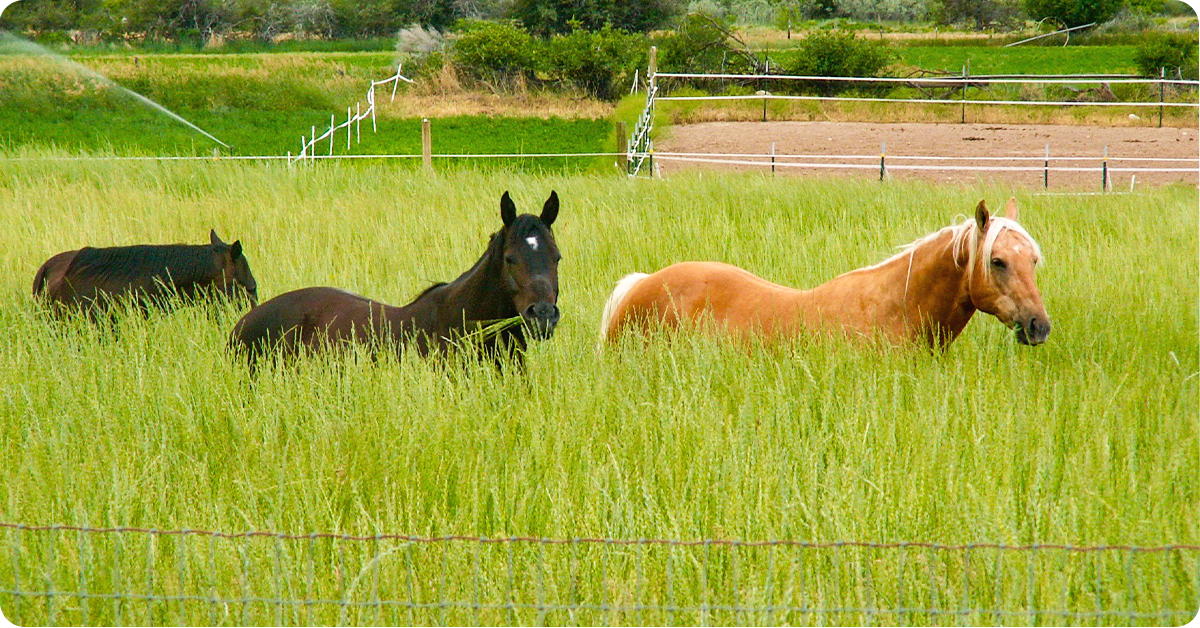
Most broad views and traditional thinking tells us that planting season is in the spring and harvest is in the fall. Then growing is over until next spring. But this old mentality misses out on big opportunities.
Fall offers some of the best planting times of the year, and you can reap great benefits next spring and in the coming years if you are willing to act after the summer harvest is in. Here are few of those opportunities that IFA agronomists can help you capitalize this fall.
Take Full Advantage of Spring Moisture
In a limited water or droughty area like the Intermountain West, fall plantings take full advantage of spring moisture. Spring plantings must wait until the ground dries enough to work or support machinery, and water is usually gone by then.
If you sow in the fall two options exist—sow early enough that the plant emerges and sets a crown then goes dormant, or sow late enough that the seeds lie dormant through the winter and emerge as soon as conditions are right, often while there is still spring snow on the ground. The extra moisture gives the budding plant access to natural stores of spring water and, therefore, is well established by the time you turn the sprinklers on or summer monsoons roll in.
Fall Forage Mixtures
Fall forage mixtures are made of “fall” or “winter” varieties meant to be dormant during winter months and re-emerge in the spring. The high-production varieties we use include Forerunner, High Octane and Luoma triticale, Willow Creek and Brundage beardless wheat, and Baldwin beardless barley. Austrian winter forage peas are occasionally added to fix nitrogen and sweeten the deal.
Fall forage mixtures are an excellent way to give you an early 30–60 day jump on the next harvest year, making it possible to double crop the following summer.
For example, if you plant a fall forage blend in the fall, you can go straight into corn or Honeysuckle Sorghum Sudangrass or start a new stand of alfalfa by the end of June the following year.
Our forage mixes are either awnless (beardless) or awnletted (with a dwarf beard) so they can be fed without thrashing. If you green chop and silage and beards are not an issue, then less-expensive bearded varieties are available for your purposes.
View IFA's popular seed mixes

Pasture Grasses
Fall is an ideal time to plant pasture grasses and we have premium mixes for both dryland and irrigated settings. We also provide consultation in cooperation with your IFA agronomist for challenging soil and water conditions, so don’t let sodic (salty) and alkaline soils deter you – there are grass and forb species adapted to those conditions.
Fall is a great time to plant pasture grasses for several reasons. They most closely replicate the natural process of a plants reproductive cycle—it germinates in the spring, matures and sets seed in the summer and drops seed in the fall. The process repeats itself year after year.
Popular irrigated pasture grasses
- Annual and perennial ryegrass (tetraploid endophyte free)
- Bromegrass
- Orchardgrass
- Wheatgrass
- Tall fescue
- Forage-type Kentucky bluegrass
- Timothy
- Many others
Popular dryland wheatgrasses
- Crested
- Siberia
- Western
- Thickspike
- Bluebunch
- Intermediate
- Pubescent
- Slender
- Tall
Popular dryland grasses
- Smooth bromegrass
- Basin Wildrye
- Russian Wildrye
- Drought tolerant Orchardgrass
Commonly used forbs
- Clovers
- Alfalfas
- Sainfoin
- Small burnet
From within these lists, there are dozens of varieties adapted to your circumstances, so work closely with your agronomist so they can help you maximize your potential.
Whether you cut or graze your pastures—or both—our over-the-counter premium mixes are made up of early, mid, and late maturing varieties for maximum effectiveness throughout the season. They are widely adapted and perform very well in most applications. But if you have special circumstances, custom options are available, just ask your IFA CCA.
Cover Crops
Cover crops are finally starting to find a place in Intermountain West agriculture. For decades, they have been used with great success in the Midwest and Great Plains and western farmers are starting to see the benefits.
Generally speaking, the Intermountain West has the most basic pH in the entire northern hemisphere, and cover crops offer an inexpensive and highly beneficial way of returning nutrients and establishing better soil health.
Late summer and fall are a good time to apply cover crops and let them work their soil magic. Any and all benefits to soils have a direct benefit outcome in the quality of and size of subsequent cash crops. They have the added benefit of proving great fall and winter grazing. Cattle will dig through snow to graze on green matter and the root clumps, especially on species like purple top turnips and radishes.
In the spring, the root systems provide beneficial bacteria, contribute to healthy aggregate and break up soil compaction. Soils with cover crops absorb and hold more water and they hold it longer.
Your local IFA agronomy center has more than 50 cover crop species at your disposal. Visit with them to find out what mixture of cover crop species work before for your rotation cycle, water, soil and goals.
Let Us Help
Fall plantings are beneficial in a number of ways, and Intermountain Farmers Association can help you determine which solution best fits your needs and circumstances. So, before you pass-off that under-utilized pasture or pivot corner or fallow a field, let us show you ways to maximize those acres. There may be a solution that could produce a profitable outcome.
Discover IFA's Agronomy Services
Written by Jason Stevens, Maple Leaf Seed Company, on behalf of IFA Agronomy, and originally published in the IFA Cooperator magazine (vol. 83, no. 3) Fall 2017.

